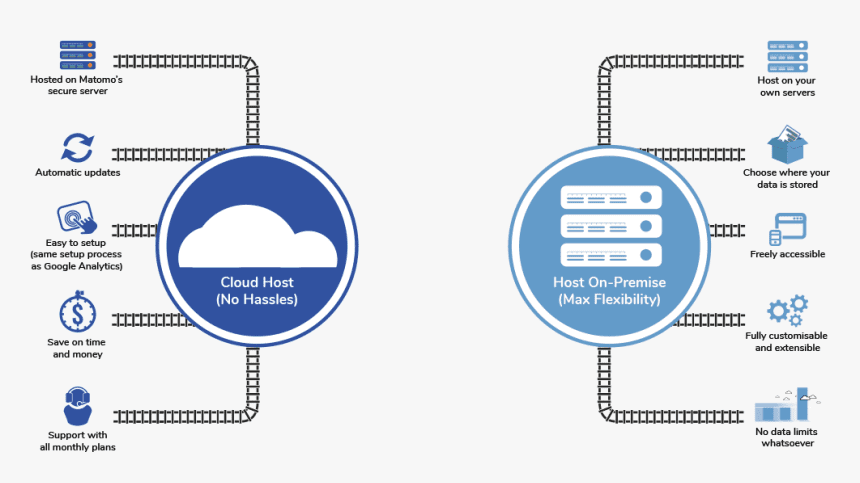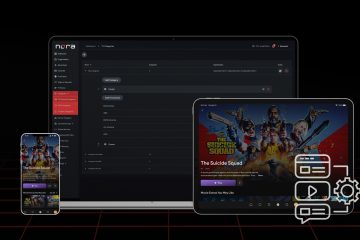Table of Contents
- What is On-Prem?
- What is In-Cloud?
- The Hybrid On-Prem In-Cloud model
- On-Prem vs. In Cloud – which one is right for you?
- Conclusion
Video content creators/distributors wanting to enter into the IPTV/OTT space have many technology decisions to make when launching an OTT/IPTV service.
One such decision is whether to deploy in-cloud or on-premise. Depending on if you are looking to budget for CAPEX (capital expenditure) or OPEX (operational expenditure) will have an immediate impact on your decision.
There are benefits to each depending on what you are deploying. Our article here on Cloud vs. On-Prem or Hybrid is a valuable overview of things to consider when you make this important decision. It affects the budget, resources, and network design.

What is On-Prem?
What does On-Prem mean? On-Prem, short for on-premise, refers to deploying IPTV middleware on dedicated server(s) within your organization’s own infrastructure, data center, or collocated IT infrastructure.
If you are a government organization, you may be mandated to have all services running within your organization’s data center (no cloud-based services) If you are licensing channels from a network, the Network may require all services within your own infrastructure. In this case, an encrypted signal is delivered to your headend via satellite or IP and that signal must stay within the confines of your network.
Aside from the cost of the server/license, maintenance costs, and support costs, operators typically pay a perpetual license fee per user (a per-seat charge). The cost can run into the hundreds of thousands of dollars as an upfront fee depending on the number of seats. These are less advantages and more requirements.
If your subscriber base is connected to you via a network (such as an ISP) with very poor external internet connectivity, then on-premise IPTV can make sense to deliver a strong quality of service. There is light communication between the user’s device and the middleware including authentication and when you change a channel. Poor connectivity can result in poor performance of the application.
If you are deploying IPTV for a hotel or similar hospitality, on-prem might benefit as you might have a totally closed network with no access to the internet.

What is In-Cloud?
What does In Cloud mean? Cloud-based IPTV/OTT requires no hardware investment. Services are provided in a software as a service model. The services scale on demand. Cloud-based IPTV/OTT platforms can run on AWS, Azure, or on a private cloud. The advantages are numerous in that you do not have to buy, maintain and service any hardware.
Cloud-based services can be deployed quickly and scale up or down. Additionally, cloud-based solutions can run IPTV solutions as well. The costs are minimal in that you can pay as you grow and do not have any physical servers to buy or support. You swap these hard fees for recurring monthly fees based on the number of subscribers.
The Hybrid On-Prem In-Cloud model
What is Hybrid Cloud? Deployments can include both OTT and IPTV delivery. In this case, you might have a private network delivering video via multicast (think TV broadcast over IP), where devices need to be directly connected to a network and also offer content delivery over the top (OTT) where content is delivered over the public internet via a content delivery network (CDN). IPTV/OTT solutions being able to support both of these models is the hybrid solution. It can be supported by either cloud or on-prem. Cloud is the better solution if your audience is geographically dispersed. If it is more localized then IPTV can probably support it.
Hybrid is a great solution for those providers who have the rights to distribute OTT but also need to distribute content over a private network like an ISP.

On-Prem vs. In Cloud – which one is right for you?
Deciding on whether to deploy in the cloud or on-prem without any overhanging government or other restrictions is fairly easy. Why invest in hardware, electricity, rack space, bandwidth, as well as the potential for equipment failure on-prem, not to mention software maintenance and additional support costs? NO REASON. Cloud-based solutions scale on-demand and can be spun up in a day and can be just as secure as on-premise solutions.
There are practical and tactical reasons to deploy on-prem. If your end-users are on an island with poor internet connectivity, then on-prem is the only way to go. If you are an ISP delivering IPTV on your own network and have the support already available and are maintaining servers anyway, then you can reduce your operational costs.
There are additional considerations for operators who deploy IPTV and OTT (the hybrid model) You may have your own network delivering IPTV but also deliver content over the top via a CDN. In this case, the cloud makes more sense as you can service both types of customers.
Conclusion
As discussed, there are situations where on-prem solutions are required by law or to comply with licensing requirements.
Where end-user connectivity is an issue, on-prem solutions may be the only path to take. Cloud-based solutions are inherently less money, scale on demand, and do not require the maintenance or support that on-premise solutions require. Cloud-based solutions are perfect for hybrid models where you have to leverage the cloud for OTT delivery.



1 Comment
Spencer · October 14, 2022 at 10:14 am
That is an important topic to speak about. Thanks for explaining all the on-premise and in-cloud pecularities